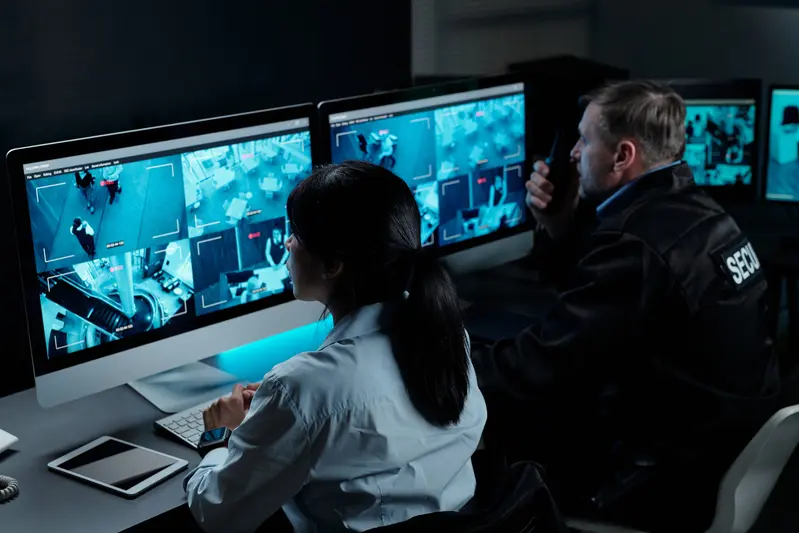Security Risk for High-Profile Individuals: Effective Strategies for Mitigation
A well-known CEO wakes up to another anonymous message—this one more direct than the last. The stalker knows their address, travel plans, and children’s school schedule, which the CEO has successfully managed to keep out of the public eye. To make matters worse, this executive may have little to no social media presence besides LinkedIn for professional networking.
Unfortunately, this is the reality most corporate leaders and public-facing executive teams face in the age of the internet and social media. Their privacy is not only compromised and their lives threatened, but the attacks can be costly to the companies and brands they represent. This means executive protection is no longer a luxury but is important for survival.
What about traditional security? Unfortunately, traditional security measures often do not provide comprehensive coverage that deals with today’s evolving threats, which go beyond personal safety. Security now involves protecting sensitive data, preventing privacy invasion, managing negative publicity, and ensuring business continuity through ongoing security awareness training.
Through a comprehensive, integrated approach to executive protection, instances of cyberattacks, corporate espionage, kidnappings, and stalking can be minimized.
Rising Security Risks for High-Net-Worth Individuals: Digital Exposure and Physical Threats
No longer is the spotlight limited to movie stars; CEOs and executive teams can be equally vulnerable. The hyperconnected world, where everybody can know what their favorite public figure is up to, has made them not only known but also exposed. With malicious actors accessing sensitive information, these people become prime targets for cyber attacks and physical danger.

Who exactly is at risk? The list is growing longer as the definition of who is “publicly visible” continues to change. Where previously it would have been political leaders, movie stars, and media personalities who were at risk, in today’s landscape, this extends to corporate executives in charge of billion-dollar companies, startup founders, and other prominent figures with a digital footprint.
While there are many reasons why the risks keep intensifying, social media and evolving digital security challenges are the main reasons why security risks for prominent individuals are on the rise. It has removed personal boundaries, making it easier for criminals to conduct real-time location tracking and doxing. With a single post, a VIP can expose their home address, plane tickets, or business dealings that are not supposed to be seen by the public. These often innocent mistakes can fuel stalking, blackmail, and coordinated attacks, complicating event security, reducing visibility into potential threats, and increasing the chances of unforeseen emergencies.
Even with no special media presence, executives can still be targets of kidnappings for ransom, deepfake-driven reputation damage, and corporate espionage.
Understanding Security Risks for Business Leaders: From Cyber Threats to Physical Danger
With technology, security is not just about firewalls and passwords; it’s about keeping VIPs safe from cyber threats and other dangers both online and in real life. Here are some of the biggest risks VIPs face in our ultra-connected world.
Physical Threats & Assault: A Persistent Physical Security Risk for Business Leaders and Executive Teams
Physical threats and assault are not new. Medieval celebrities who achieved notoriety through their talents and social standings, like painters and performers, experienced a certain level of danger, with some even getting assassinated.
Although our society has evolved, prominent individuals are still in danger of physical threats and assault. Threats can be from criminals, overzealous fans, and even aggressive protestors.
Consider the infamous 2022 stage rush on Dave Chappelle. Before that, the comedian had never been attacked on stage during a live performance and had enjoyed thousands of days on the road.
Lesson learned? Regardless of how likable somebody is, they are not immune to assault or physical threats.
Executive Kidnapping Threats
Executives getting kidnapped are not just Hollywood plots. Criminal organizations across the world still target VIPs and their families for ransom or leverage, as they are almost certain of a payday, and sometimes just wish to cause harm.
The attempted kidnapping of Michigan Governor Gretchen Whitmer in 2020 by a domestic terrorist group is an example of a case where planners were not motivated by money. While the FBI stopped it, the incident was proof that even high-ranking members of society can not rule out kidnappings as a threat to their security.
Stalking & Harassment
Digital obsessions don’t always stay online. Sometimes, they escalate, posing a real-world threat. A C-suite executive at a multinational firm, due to her high influence and public attention, became the focus of an online stalker who began commenting obsessively on her social media and eventually appeared at company events.
Her protective intelligence team, along with dedicated security personnel, identified early behavioral red flags, conducted a thorough threat assessment, and coordinated with local authorities to mitigate the risk. They implemented tighter access control at events and adjusted her travel plans. Because of their swift and proactive response, the situation was contained without harm. This example underscores how protective intelligence can stop a threat before it escalates into a physical security crisis.
Cyberattacks & Data Breaches
A leaked email or hacked Instagram may mean an executive’s private life becomes public property. With crypto scams becoming a lucrative way to make money, cybercriminals are targeting personal accounts more than corporate ones.
Most cyberattacks and data breaches are fortunately handled before more damage is done. However, they can extend in real life, leading to real-life confrontations.
Corporate Espionage: A Hidden Danger in Personal Risk Assessment
Sometimes, the biggest threat to a business leader or a company is not an outsider but an insider working for a competitor or with other selfish reasons. A rogue employee or a nation-state hacker may be looking for trade secrets, confidential data, or strategic plans from their target.
These threats are exacerbated by personal devices that lack encryption or executives discussing sensitive business matters over unsecured lines.
How Executive Protection Mitigates Security Risks with Proven Security Measures & Strategies for Business Leaders
Each threat category demands a unique set of countermeasures—what works for preventing physical harm may not suffice against cyberattacks or espionage. This is why companies and teams offering security to executives rely on a multi-layered security approach.
Here are some of the ways protection teams stay ahead of security threats.
Pre-emptive Intelligence & Personal Risk Assessment
Digital obsessions don’t always stay online. Sometimes, they escalate, posing a real-world threat. A C-suite executive at a multinational firm, due to her high influence and public attention, became the focus of an online stalker who began commenting obsessively on her social media and eventually appeared at company events. Her protective intelligence team, along with dedicated security personnel, employed advanced security services and strict access control measures to protect the executive, who was identified as a vulnerable target based on her threat profiles. They identified early behavioral red flags, conducted a thorough threat assessment, and coordinated with local authorities to mitigate the risk.
Customized Security Detail & Privacy Protection: Countering Threats to Executives
Even though bodyguards in dark suits are often synonymous with personal security, everything boils down to strategy. A protection team must come up with unique ways to prevent predictable patterns, including adjusting travel schedules. They also map out safe routes and develop improved methods for managing crowds, addressing both physical concerns and potential cyber attacks targeting their clients.
Close protection is also key to ensuring VIPs are safe before, during, and after the event. Private security teams are trained in defensive driving and close-quarters protection, creating a shield between their clients and potential threats.
Digital Security Hygiene
Since high-level professionals also need to use social media and technology to communicate with colleagues and peers, a strong firewall is a must for a strong security detail. Current executive protection services include strict cybersecurity protocols, combining security awareness training with securing Wi-Fi networks and encrypting communications.
Security professionals not only monitor phishing attempts, data breaches, and hacking threats but also integrate these efforts with physical security measures. These proactive steps ensure bad actors do not gain digital access to sensitive information while maintaining comprehensive protection.
Emergency Response Plans & Crisis Management
Preparedness makes all the difference when worst-case scenarios unfold, whether a kidnapping attempt, a public altercation, or a data leak. To successfully respond to emergency cases, security teams must regularly conduct drills, establish secure communication channels, and, more importantly, track principal movements in real time.

Teams offering VIP security understand that executive protection is not just about reacting to danger but staying five steps ahead. Through this approach, they can successfully create an invisible but powerful barrier between threats and their clients.
The Value of Threat Intelligence Gathering & Route Planning
In executive protection, prevention starts long before an individual steps outside. It’s an integrated process that blends intelligence gathering with on-the-ground tactics. Every move is informed by data, safeguarding sensitive information and managing physical presence. Every decision is made with one goal in mind: keeping business leaders safe in an unpredictable world.
It is a three-part process involving:
1. Continuous Cycle of Threat Assessment
Protection of business leaders and executive teams is not a one-and-done task, but it is a loop. The team offering security services must detect anomalies, validate threats, and adjust protective measures if needed.
Intelligence teams must also analyze local crime patterns and social media chatter to ensure nothing slips through the cracks. And if something seems off, it probably is.
2. Route Planning & Safe Travel
Safe travel for prominent figures is about finding the fastest and safest routes. This means intelligence teams doing the legwork, leveraging local intel, and mapping out alternative routes.
A case in point: An executive’s journey had to be changed at the last minute due to a sudden protest along their planned route. The protection team pivoted instantly, rerouting to avoid the hostile crowd.
3. Real-Time Monitoring: Eyes Everywhere
Once the journey begins, the team is actively monitoring for potential threats. The goal should be to have situational awareness of any development, from a traffic jam to protests forming near destinations. With real-time intelligence, the security team can choose a better route per the plan.
In addition to relying on a security team’s experience in detecting danger, the use of GPS trackers, AI-driven threat detection software, and encrypted communication tools can help.
Digital Security Hygiene & Protecting Privacy & Personal Data
Bad actors are constantly looking for ways to find and exploit the data of prominent individuals. Here are two smart moves to lock down their data.
1. Reduce Digital Footprint
Whenever a public figure shares a picture or a video on social media, shares their itinerary, or tags a friend in one of their late-night Instagram stories, they leave a digital trail that can be tracked.
To avoid that, teams offering security to business leaders and executives should encourage them to avoid oversharing.
A recent example of vulnerabilities in digital communication is the leak of Trump officials’ data via Signal. While the debate is now polarized depending on one’s political affiliations, the misstep of adding a journalist led to the leaking of sensitive data. These include sensitive plans, email addresses of the officials, and phone numbers. This scandal is a textbook example of mistakes that can happen.
2. Lock Down Your Communications
In addition to avoiding oversharing, communications between executives should be on encrypted messaging apps and, if need be, with disappearing messages enabled.
Prominent individuals should also use VPNs to keep their online activity private, especially when away from their offices and homes. Other ways of preserving their digital security hygiene include avoiding using the same password for everything and embracing multi-factor authentication on their emails and social media platforms.
Real-Life Success Stories of Security Challenges and Threats Well Handled
Here are three instances where executive protection (EP) strategies successfully stopped threats before becoming fatal.

1. Thwarting a Kidnapping Attempt
In 2022, there was an attempted kidnapping of a traveling executive in Mexico. By implementing some of the above-highlighted strategies, the intelligence team picked up on suspicious online chatter. The individual hinted at a potential kidnapping and later negotiated a lump sum.
The EP team acted fast. They coordinated with local authorities, rerouted travel plans, and switched lodging at the last minute. These changes ensured that the attacker never had the chance to carry out their plan.
A few hours’ delay or a lack of an alternative plan could have led to a ransom payment. However, real-time intelligence and quick decision-making successfully prevented a crisis.
2. Preventing a Public Harassment Scenario
A public figure who was a speaker at a recent live event had an unknown admirer. For reasons unknown, the admiration took a darker turn, and the individual took to social media detailing plans to attack the speaker.
Thanks to social media monitoring by the intelligence team, the “admirer’s” messages and plans were discovered. The team ramped up security, discreetly tracked the suspect, and intercepted them before they reached the speaker. They later alerted the authorities.
The event continued, with only a few attendees becoming aware that a threat had been apparent.
3. Neutralizing an Espionage Threat
Trade secrets are to the corporate world what gold is to the finance world, making them a prime target for internal espionage. A recent decision by a renowned company, with the help of an EP team, to make last-minute changes protected their trade secrets.
A team of executives traveling was advised to switch to secure, company-issued devices. The slight adjustment exposed an insider attempting to smuggle confidential data. The individual was later removed from their position.
Security Blind Spots: The Common Mistakes That Put Executives at Risk
Even the best security setup can fall apart if some gaps go unnoticed. The most common mistakes that can leave executives and prominent individuals exposed include:
1. Lack of Comprehensive Planning
An EP team’s biggest mistake is relying on a single layer of protection. This can be having a single bodyguard or having minimal cybersecurity expertise, exposing business leaders to calculated attacks.
This can be solved by having a multi-layered approach to protection —blending digital, physical, and procedural security to cover all possible attack vectors.
2. Underestimating Cyber Threats
While an EP team must spend time and resources building a solid physical security plan, they should never underestimate cyber threats. A hack of social media pages, wiretapping calls, or not doing social media audits before a public appearance can be a disservice to the efforts already put to secure a VIP.
3. Complacency
Thinking it won’t happen is arguably the biggest security risk. Sometimes, an EP team might ignore red flags, such as unverified email requests, an unfamiliar face at an event, or suspicious online chatter, thinking nothing serious can happen.
Instead, executives and security teams must always stay alert. This may include constantly assessing and updating risk profiles and identifying suspicious developments.
4. Poor Communication
Security should never be a one-person job. Miscommunication between security professionals and others around VIPs, such as travel coordinators and assistants, can lead to critical errors.
A successful protection job relies on good communication from the EP and ensuring everybody in a VIP’s orbit understands and follows the best practices. This is not paranoia but preparation and eliminating gaps before they become vulnerabilities.
Conclusion
Physical threats, kidnappings, cyberattacks, and corporate espionage remain major concerns for prominent individuals. As technology advances and AI becomes more accessible, security protection has also become more than having a bodyguard or installing a security system. It’s about how an executive protection (EP) team implements comprehensive, intelligence-driven strategies.
Are you interested in exploring Executive Protection Services as an organization? Explore our services and see how we can help you protect your personal and professional life.
Contact us today for a risk assessment consultation or to schedule a security audit to identify vulnerabilities you may be overlooking. Remember, your security should never be an afterthought but a priority.




